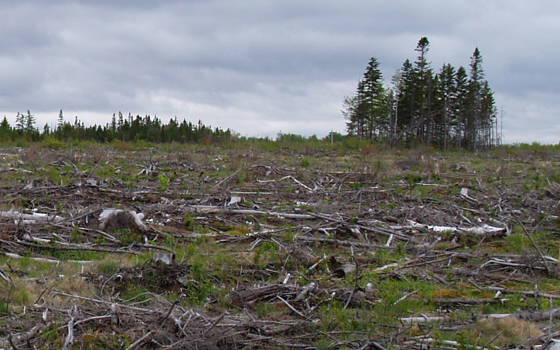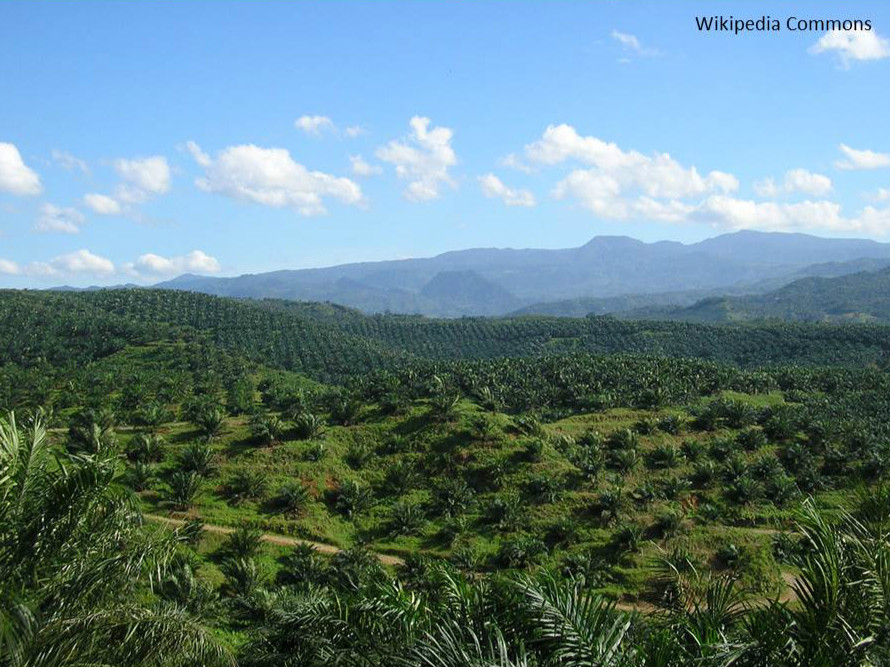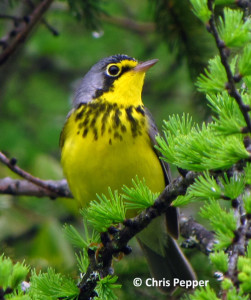Since 1968 when standardized surveys began, the Canada Warbler has suffered declines of 85% across its Canadian range with an annual loss of 1.95% between 2002 and 2012. In Nova Scotia the decline has been much higher at 8.64% per year. With 80% of the breeding range of this species located in Canada, Canada has a significant responsibility for the conservation of this species. This is especially true of eastern Canada, which supports the highest proportion of the breeding population in the country.
Conservation status of the Canada Warbler:
| Canada (Species at Risk Act, Schedule 1) | Threatened |
| Nova Scotia | Endangered |
| New Brunswick | Threatened |
Threats
The specific factors responsible for the decline of Canada Warblers have not yet been confirmed. However, there are multiple factors likely contributing to the decline.
Breeding Habitat Loss and Degradation: 
- Drainage and conversion of wet forests for development (eastern range) agriculture (western range), and use by the oil and gas industry (western range).
- Removal of the shrub layer during silviculture activities and harvesting. Such activities render the understory unsuitable for Canada Warbler. Deer over-browsing can decrease the shrub layer to a lesser extent
- Logging and road development, and energy and mining activities (especially in British Columbia), have destroyed and fragmented forested habitat.
Winter Habitat Loss and Degradation: 
- Widespread habitat loss from deforestation has altered approximately 90% of the wintering habitat in northern South America. Currently, the Andean sub-tropical forest is one of the most threatened forests in the world. Reasons for deforestation include agricultural activities, timber harvest, and human encroachment due to population pressure
Ecological Changes:
- The Canada Warbler is an aerial insectivore, which means it eats flying insects. Insect populations have declined in recent decades for many reasons (e.g. habitat loss, habitat acidification, and pesticide use). Further, climate change has caused a temporal mismatch in the peak of insect abundance and the breeding season of many aerial insectivores. These birds may be struggling to adapt to such changes in their prey base
Accidental Mortality
- Collisions with between Canada Warblers and anthropogenic structures (e.g. buildings, vehicles, and power lines) often occur during migration. Canada Warblers are particularly susceptible to this type of mortality (e.g. they are17.5 times more likely to collide with buildings than the average bird species).
Sources: Recovery Strategy for the Canada Warbler (Cardellina canadensis) in Canada (ECCC), Species at Risk Public Registry: Canada Warbler (ECCC), Birds of North America Online: Canada Warbler

